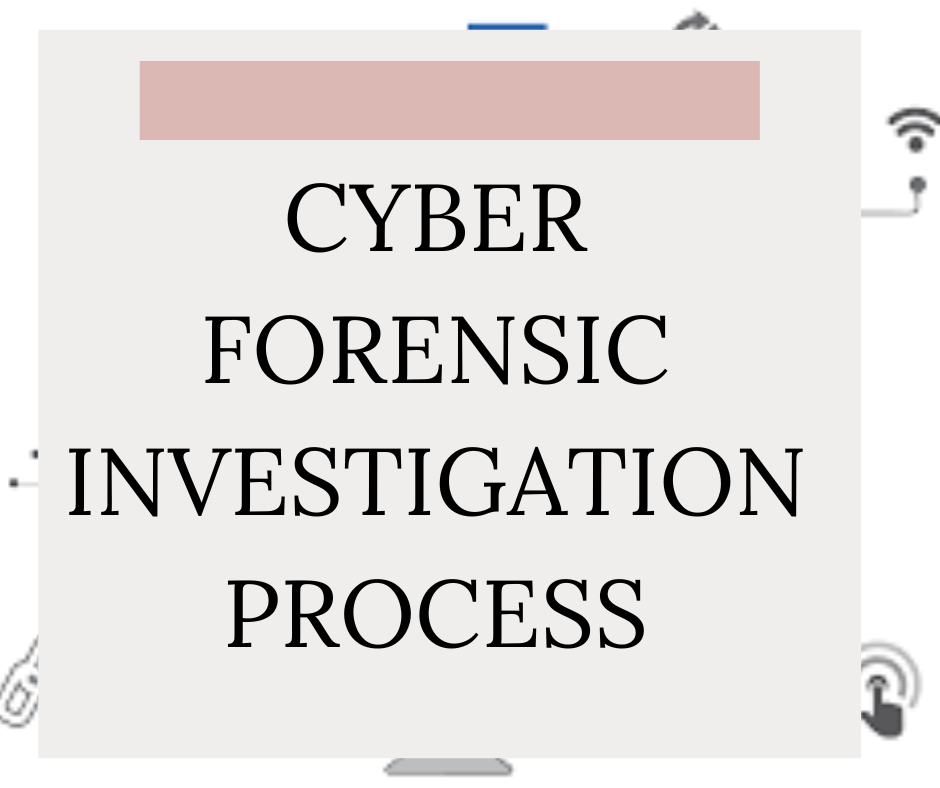The cyber forensic investigation process is the foundation of solving cybercrime cases, uncovering fraud, and preserving digital evidence for court or internal security audits. As cyberattacks grow in complexity, organizations, investigators, and law enforcement agencies rely on structured forensic methods to track digital footprints. Without this process, it would be nearly impossible to establish how an attack occurred, who was behind it, and what evidence can be legally presented.
What is the Cyber Forensic Investigation Process?
At its core, the cyber forensic investigation process is the structured method of identifying, collecting, analyzing, and presenting digital evidence. Think of it as the digital equivalent of crime scene investigation, but instead of fingerprints and DNA, investigators work with emails, logs, deleted files, and encrypted data.
The goal is simple: ensure that digital evidence remains intact, verifiable, and admissible in court. Investigators use advanced digital forensic investigation techniques to extract details from laptops, smartphones, servers, or even cloud platforms. For instance, recovering deleted financial emails in a fraud case can determine whether funds were intentionally misused.
Why is the Cyber Forensic Investigation Process Important?
The importance of this process goes beyond solving cybercrimes. Businesses, governments, and individuals depend on it for multiple reasons:
Fraud Detection: Financial institutions use forensic methods to trace insider trading or fraud schemes.
Data Breach Analysis: When companies experience a breach, forensic teams identify what was stolen and how the hackers entered.
Legal Evidence: Courts rely on forensic evidence in cases involving harassment, intellectual property theft, or corporate disputes.
National Security: Cyber forensic investigation process helps agencies track espionage activities and prevent terrorism-related digital crimes.
In 2024, the FBI reported that over 800,000 cybercrime complaints were filed in the U.S. alone, with losses exceeding $12.5 billion. Many of these cases required a structured forensic approach to reach a resolution.
Stages of the Cyber Forensic Investigation Process
The process is not a single action but a series of well-defined steps. Each stage ensures the evidence remains reliable:
Identification
Detecting unusual activities such as unauthorized access, suspicious emails, or malware infections.
Preservation
Securing the affected system or device without altering evidence. This may involve creating forensic disk images.
Collection
Gathering logs, emails, hard drive copies, or mobile data that could contain valuable information.
Analysis
Using digital forensic investigation techniques to uncover patterns, hidden files, or metadata. For example, analyzing timestamps on deleted files can reveal when an intruder acted.
Documentation
Creating detailed reports about findings, tools used, and methods applied to maintain transparency.
Presentation
Delivering results in a format understandable to legal teams, judges, or corporate executives.
By following these steps, investigators maintain a clear chain of custody, ensuring evidence cannot be disputed in court.
Common Digital Forensic Investigation Techniques
Forensic investigators rely on specialized methods to examine different types of digital data. Some widely used techniques include:
Disk Imaging – Creating a bit-by-bit copy of a hard drive to preserve the original system.
Email Header Analysis – Tracking the origin of an email to identify fraud, phishing, or insider leaks.
Mobile Device Forensics – Extracting call logs, messages, or GPS data from smartphones.
Deleted File Recovery – Retrieving files users or attackers tried to erase permanently.
Timeline Reconstruction – Rebuilding the sequence of digital events to see how an incident unfolded.
Reverse Steganography – Detecting hidden information embedded within images or files.
A practical example: in one corporate investigation, analyzing email headers revealed that fraudulent messages claiming to be from a CEO were actually sent from an external IP address in another country. Such findings can be game-changing in preventing large-scale fraud.
Challenges in Cyber Forensic Investigation
Despite its structured process, cyber forensics comes with hurdles that investigators must address:
Huge Volumes of Data – Modern systems store terabytes of logs, files, and communication records, making filtering difficult.
Encryption – Strong passwords and encryption methods often delay investigations.
Jurisdiction Issues – Crimes crossing international borders can complicate evidence collection.
Evolving Cyber Threats – Hackers continuously adopt new technologies, forcing investigators to stay updated.
These challenges highlight why sophisticated forensic tools are not optional but necessary.
Best Tools for Cyber Forensic Investigation
Software plays a central role in handling digital investigations. Among available tools, SysTools MailXaminer stands out as a trusted solution for both professionals and organizations.
Here’s why:
Supports 20+ email file formats including PST, MBOX, and OST.
Provides advanced keyword and boolean search for filtering evidence quickly.
Preserves metadata integrity, ensuring evidence remains admissible in legal proceedings.
Offers an easy-to-use dashboard suitable for investigators at all skill levels.
Allows batch analysis, saving hours of manual effort.
By combining powerful search options with comprehensive file compatibility, MailXaminer simplifies both the cyber forensic investigation process and the application of digital forensic investigation techniques. Investigators don’t just save time—they also reduce the risk of overlooking critical evidence.
Real-World Applications of Cyber Forensics
Cyber forensic practices are applied across industries:
Law Enforcement: Agencies use forensic software to trace ransomware groups and arrest offenders.
Enterprises: Companies detect insider threats by analyzing suspicious emails and financial transactions.
Legal Disputes: Digital forensics provides key evidence in divorce cases, workplace harassment claims, and intellectual property disputes.
According to Cybersecurity Ventures, global cybercrime damages are projected to hit $10.5 trillion annually by 2025. This projection alone underscores the importance of forensic methods in reducing financial and reputational damage.
Future of Cyber Forensic Investigation
The field of cyber forensics is evolving rapidly. Future trends include:
AI-Powered Forensics – Artificial intelligence will help detect anomalies faster.
Cloud and IoT Evidence Handling – With more devices connected, investigators must adapt to new sources of data.
Increased Demand for Specialists – As cybercrime grows, skilled forensic professionals will be highly sought after.
Organizations that adopt modern forensic tools and train experts are better equipped to handle these future challenges.
Conclusion
The cyber forensic investigation process remains one of the most reliable ways to uncover digital crimes, secure evidence, and protect organizations from long-term losses. From recovering deleted files to analyzing suspicious emails, forensic practices ensure truth prevails in both courtrooms and corporate environments.
Choosing the right tool is equally important. With pro tool, investigators get a powerful yet user-friendly platform that simplifies evidence collection and analysis while preserving integrity. Whether you’re part of a law enforcement team or a corporate IT department, having the right software makes the difference between guesswork and concrete proof.






Leave a Reply